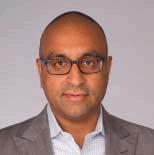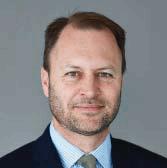Are You Ready To Fund Your Life Sciences Startup?
By Rob Wright, Chief Editor, Life Science Leader
Follow Me On Twitter @RfwrightLSL
If you have an idea for a life sciences product geared toward meeting an unmet medical need, you have probably given a lot of thought as to what makes it special, as well as why insurance companies should be willing to pay for it. But no matter how differentiated or breakthrough your innovation might be, if you haven’t considered how to finance your vision, it likely won’t ever see the light of day.
Not long ago I attended an invitationonly event for CEOs of medtech and biopharmaceutical startups, which included a venture capital educational session. Conducted in a Q&A format, the panel consisted of four life science financial experts (i.e., Aftab Kherani, M.D., Aisling Capital; Axel Bolte, HBM Partners; Chau Khuong, OrbiMed; and Scott Weiner, Pappas Ventures). If you think your startup is ready to be funded but want to minimize the likelihood of making costly mistakes, be sure to take into account the following wisdom from these experienced venture capitalists.
What Kinds Of Biopharma Companies Interest Your Organization?
CHAU KHUONG, ORBIMED: For early-stage investing (i.e., working with scientific founders and academic entrepreneurs), one of our first screens is the quality of science and data. Our firm invests very early when the science and data make sense. While we will also invest in late-stage opportunities and pretty much everything in between, most of our companies are either in the clinic or about 18 months away from entering. If a company is more than 18 months away from clinical trials, we tend to look for a scientific area we find interesting (e.g., gene editing). For example, we have an early-stage investment with a company called Intellia Therapeutics. While we invested in Intellia because we believe its technology platform has potential, we also felt the company had a clear path for getting its therapeutic into man. Though there isn’t a therapeutic area in which we haven’t invested, because we are data-driven, the bar may be a little higher in some less-understood therapeutic areas. With medical devices, we tend to take a longer-term view and look to fund companies that can create the most value from approval to commercialization.
AXEL BOLTE, HBM PARTNERS: For us the management has to be fantastic, and the science has to be interesting. To find a good investment, we try to look for unique situations. For example, we worked with OrbiMed to bring an Austria-based company, Nabriva Therapeutics (NASDAQ: NBRV), to the King of Prussia (PA) area. We invested in a company that had no institutional shareholders but just Italian families. On the surface this might sound a little scary, but the result was Advanced Accelerator Applications moving to the states, being listed publicly (NASDAQ: AAAP), and becoming a billion-dollar company. We seek companies that look more like businesses. Though early academic startups aren’t the right group for us, we do enjoy giving them a look once their series A is through and we can join a syndicate.
AFTAB KHERANI, AISLING CAPITAL: Where we have the most conviction to actually write a check is with private companies and when we might have a shot at being the last private capital to enter. We understand we might be leaving some money on the table, but just given our risk-reward mandate, that’s where we are most comfortable. While we do characterize ourselves as late-stage investors, it is important to note that late-stage for one therapeutic area could be completely different from late-stage for another. For example, we were involved in funding Loxo Oncology and were working with OrbiMed. We did a $33 million series A, and in a few months, we had inbound interest to basically do a crossover round. Nine months later Loxo went public. Late-stage in pain would probably be something much further along in clinical development or possibly even commercial. For devices, right now it’d probably be tough for us to do something that was preapproved, similar to diagnostics. Our approach is to try to do all of our investing out of a fund, because we feel doing so helps us be nimble and capture the occasional inefficiency. For example, the one royalty investment [a category of private equity funding specializing in the purchase of consistent revenue streams derived from royalty payments] that we have done was with the compound ibrutinib. It was preapproved at the time, and we thought that led to a bit of inefficiency in the pricing, which was syndicated with two other groups. This is very similar to how we view some of the opportunities on the public markets as well. Suffice it to say, when it comes to private companies, we are nuanced in how we view late-stage, and this is dependent on therapeutic area.
SCOTT WEINER, PAPPAS VENTURES: Our firm invests in both preclinical and clinical stage biotech companies with a goal of funding through Phase 2 proof-of-concept (PoC) results. On the device and diagnostics side, we tend to lean toward later-stage opportunities. This is because on the device side we don’t want to take engineering risk, and on the diagnostic side we prefer not taking precommercial risk. We know someone on the team at about 70 percent of the companies in which we invest. Perhaps we met them when they were just starting out, and it wasn’t the right fit at the time. But as they’ve matured and hit some milestones, we’ve become more interested and ended up joining an investment syndicate. We really like to get to know the teams in which we are going to invest, as well as the other investors. As a company builds its investment syndicate, it is important to make sure the investors are as much aligned with each other as they are with the company’s strategy. We also start two companies or so per fund cycle, and that is usually licensing IP and starting something from scratch or licensing an asset from pharma or academia.
Given The Recent Slowdown In The IPO Market, What Are Some Of The More Innovative Ways Companies Are Raising Money?
KHERANI: Right now, I could probably count on one hand the number of groups willing to write a check greater than $10 million for a preapproved medtech. For quality companies, there is still interest; it’s just a little harder to go public right now. However, there will be opportunities in the follow-on environment [i.e., stock that is issued after a company has already IPO-ed]. That being said, some companies, even those that have had success, will have to get accustomed to the idea that the next follow-on financing might be done at a discount. There is a speculative nature to what we do, as our companies aren’t typically valued on a multiple of cash flow. While it is great when Morgan Stanley, JP Morgan, and Goldman are fighting to take your company public, sometimes, given the investment environment, you have to play in a “less elegant” part of the finance swimming pool (e.g., Form 10s and reverse mergers), and these approaches work more often than not. (Editor’s Note: For more on Form 10s and reverse mergers be sure to read my blog — Beyond IPOs: Alternative Funding Options For Biotech Startups). In our view, these more-creative approaches can sometimes be a better path than doing the series F and getting the seventh VC on board.
KHUONG: It is hard to imagine the recent IPO market, the best in our industry’s history, would have been sustainable without a blip. And while the market has come down, there are still IPOs happening. During times like these, strong clinical data is still appreciated by the market, as are certain technology platforms (e.g., gene editing) that open up newer ways to address diseases than traditional small molecules or other therapeutic modalities. In the public market where clinical data didn’t work out and companies with cash end up being public shells, a reverse merger could be ideal. One of our companies, Pieris Pharmaceuticals, was in a situation where the venture investors in Europe were basically tapped out, and the company could no longer raise venture money. It went public through a reverse merger in December 2014, raising about $15 million. Though a very small market cap company, it got uplisted to the NASDAQ, raised another $30 million last year, and just recently closed on about $16 million as a public company. It is important to remain creative, as there are ways to access the public markets, even if the traditional IPO route is not there.
Where Do You See The Next Hot Therapeutic/Technology Platform Investment Opportunity?
BOLTE: Oncology will remain an extremely important area of investment, in particular for smaller companies such as the ones that we can finance as VCs and smallcap publics. While I cannot predict which specific areas will become hot, we currently have interest in immuno-oncology (IO) and cell therapies. As always though, these companies have to show that they can actually deliver. For the most part, the immunooncology market (i.e., checkpoint inhibitors) seems to be in the hands of large pharma. That being said, I could see more traditional oncology treatments (e.g., kinase inhibition) coming back into favor with investors. A good similar example could be drawn from antibiotics, which were a bit sleepy for a while. But with the rise of superbugs and government-supported initiatives such as the GAIN Act, we saw companies like Cempra really take off. Another thing to think about is the recent IPO market that saw about 200 companies go public during the past five years. Most of these companies will eventually run out of money and need to raise more. While that could be a good opportunity to invest, keep in mind that biotech attrition means that only 10 to 15 percent of these will end up being successful. The unfortunate reality is that a lot of these companies will have negative events, and you can actually see a wave of that starting to happen.
WEINER: The way we view opportunities as being either “hot or not” really is dependent upon the strength of the science. As science gets better, we have an improved understanding of mechanisms of action and more appropriate patient selection, which can de-risk clinical development. The spaces we currently view as being hot and where we are seeking risk-mitigated opportunities are those moving away from developing treatments and toward development of curative therapies. While cures may come with cell therapy, gene editing, or immuno-oncology, it is still very early days. When you consider that 40 percent of public biotechs are in the oncology space, one can presume that if going public is a goal, being in oncology can increase your chances. Although oncology has been a great space for us, we’re still a little cautious unless we see a very specific indication and have a good sense of what the standard of care is. As early-stage investors, we have to be prudent with our approach. As such, we don’t necessarily look for what is hot, but what we think will differentiate itself in the market and then return capital to the investors.
With Regard To Oncology Startups, Has The Investment Community Pivoted Too Far Toward Combination Therapies, And Is It Time To Scale Back?
WEINER: Depends on the opportunity. For us, it’s more important to know that a company understands what the development path could be as opposed to whether or not you have a checkpoint inhibitor or need to run a combination trial. We want to have a good sense of what the path is, if that path makes sense, and how that path could change in the next few years based on evolving standards of care. If a company can articulate that, and we can validate it with oncologists in our network, then we’re more open-minded and willing to invest in oncology companies. While we have always pursued investing in novel targets, it doesn’t necessarily have to be the latest immuno-oncology mechanism. One of our biggest wins in oncology was a company called Plexxikon, which developed one of the first selective BRAF inhibitors.
KHUONG: Though we are very cautious right now about investing too much in oncology, the reality is that for this year four out of seven investments have been in oncology. What we are looking for are different mechanisms and targets beyond just immunooncology checkpoint inhibitors. While oncolytic viruses have been around for a long time, the current data is quite interesting, making this area ripe for revisiting.
KHERANI: It’s easy to say oncology might be a fad, but I would disagree. In the past decade, treatments like ibrutinib, PD-1, PDL-1, CTLA-4, and even things like crizotinib should not be considered small advances. While there are regimens that have historically worked really well (e.g., the Stanford V for Hodgkin’s), the reality is that for the most part, when treating cancer patients, we have been giving treatments that make them feel awful. As we better understand what drives cancer, we have improved our ability to target those drivers. As such, the challenge is shifting to finding patients who have those driver mutations or might be amenable to IO therapy. This shift is going to create interesting opportunities on the diagnostics side. The two areas in oncology where we’ve spent the most time are with companies working on therapeutics to treat those driver mutations and diagnostic companies developing technologies that can discern who has those driver mutations.
What Is Your Opinion On Going Public Via IPO or Being Acquired As An Exit Strategy?
WEINER: You can’t predict whether companies can go public or will become acquired. The benefit of having one our companies acquired is that we get the cash up front and don’t have to worry about the challenges and fluctuations of the stock market. But companies are not sold, they are bought, and as such we are always careful to make sure companies never put up a “For Sale” sign. When the IPO window is open, if our companies can get out, great, but we tend to view these as financing events and not necessarily exits. It is important to note that public companies have a lot more flexibility in terms of capital raising and using their stock as collateral. That being said, we have had companies confidentially file for an IPO and get acquired right before they were ready to flip.
How Do You Pick Compounds That You Think Are Going To Make It, And How Do You Measure Your Level Of Success?
BOLTE: The ultimate test is your returns, and our investors measure these very carefully. There are companies that don’t make the returns and are still successful; it just depends on the cycle of the markets. Despite a lot of due diligence, it is very difficult to achieve certainty when trying to pick which compounds might make it. As such, it is better to be able to look at a portfolio of compounds, because a single investment on a single compound can make or break even the largest of companies.
KHUONG: As investors we are judged by our returns, but that is just one metric. You can go back and see how many OrbiMed portfolio companies have developed drugs or devices that ultimately got to a point of approval. We recently did this for our portfolio of companies and found that our venture dollars supported FDA approval for over 40 drugs, and it was approximately half that number for devices.
KHERANI: Approvals are terrific, but all we are really judged on is a quarterly report card. In our experience, limited partners have gotten savvier and savvier in terms of really focusing in on performance and grading us four times a year.
WEINER: As we are earlier-stage investors, we know that things aren’t always going to work, and that’s OK. If nothing ever failed, then we probably haven’t taken appropriate investment risks. When something fails, we try to understand why. If we got the science wrong, and that was something that couldn’t be predicted, so be it. But if something failed because we didn’t design the trial right, or we have a management team issue, then shame on us. There are certain risks in early-stage investing that sometimes can’t be avoided. Risk mitigation combined with appropriate diversification has allowed us to achieve good returns.
KHUONG: Building on that — we try to avoid getting zeroes in our portfolio (i.e., a company fails, and there’s nothing left). We mitigate that with other assets. So, if it’s a company that has a platform technology, then you’ve got a couple of different ways to achieve success. In other cases where we’ve had clinical failures, we’ve pivoted the companies by bringing in other assets. For example, Receptos was a company where the initial technology failed, but we brought in a great management team with assets from another company, and it ended up becoming a big success. So, another way to measure success as an investor is to look at how we navigate through challenges.
WEINER: Agreed. There is a decent percent of our portfolio that have exited based on an indication that wasn’t part of the original investment thesis. You do have to have flexibility and great management to recognize an opportunity to bring something inhouse or elevate a secondary program to become a primary program. It is important to keep in mind that it is not always your lead program that will drive your ultimate success.
Aisling Capital
 “Our firm is basically the continuation of the Perseus-Soros Biopharmaceutical Fund,” says Aftab Kherani, M.D., partner at Aisling Capital. “Since 2000, we have raised over $1.8 billion in committed capital across funds. While we are broad life science investors, we do more therapeutic investing than any other type. We still do devices, diagnostics, and some services (e.g., CROs and CMOs) and have a preference for late-stage companies.”
“Our firm is basically the continuation of the Perseus-Soros Biopharmaceutical Fund,” says Aftab Kherani, M.D., partner at Aisling Capital. “Since 2000, we have raised over $1.8 billion in committed capital across funds. While we are broad life science investors, we do more therapeutic investing than any other type. We still do devices, diagnostics, and some services (e.g., CROs and CMOs) and have a preference for late-stage companies.”
Founded: 2000
Number Of Employees: 19
Location: New York
Website: www.aislingcapital.com
For general inquiries, contact Aisling at 212-651-6380.
HBM Partners
 “We are a healthcare-focused investor company with about $1.5 billion under management,” states Axel Bolte, investment advisor at HBM Partners “We invest in biopharmaceuticals, devices, and diagnostics, and tend to be fairly agnostic when it comes to what therapeutic areas to invest in or what type of investment vehicle to use. However, we lean more toward later-stage and public-industry investing.”
“We are a healthcare-focused investor company with about $1.5 billion under management,” states Axel Bolte, investment advisor at HBM Partners “We invest in biopharmaceuticals, devices, and diagnostics, and tend to be fairly agnostic when it comes to what therapeutic areas to invest in or what type of investment vehicle to use. However, we lean more toward later-stage and public-industry investing.”
Founded: 2001
Number Of Employees: Approximately 21
Location: Zug, Switzerland
Most Recent Success Story: Advanced Accelerator Applications (NASDAQ: AAAP) is a $1.2 billion market cap company. HBM led the first institutional financing round for AAAP in 2013.
Website: www.hbmpartners.com
For general inquiries, contact HBM at +41-43-888-7171.
OrbiMed
 “We are a global firm managing about $14 billion,” says Chau Khuong, private equity partner at OrbiMed. “About two-thirds of our venture investments target biopharma companies, while the remaining one-third is focused on medical device, diagnostics, and digital health. We are active at every stage of investing – from startups that we can incubate inside our firm up through growth-equity – and in our public equity funds we invest all the way up to Big Pharma companies.”
“We are a global firm managing about $14 billion,” says Chau Khuong, private equity partner at OrbiMed. “About two-thirds of our venture investments target biopharma companies, while the remaining one-third is focused on medical device, diagnostics, and digital health. We are active at every stage of investing – from startups that we can incubate inside our firm up through growth-equity – and in our public equity funds we invest all the way up to Big Pharma companies.”
Founded: 1989
Number Of Employees: Over 100
Locations: New York, San Francisco, Shanghai (China), Mumbai (India), and Herzliya (Israel).
Most Recent Success Story: Acerta Pharma acquired by AstraZeneca in December 2015 for up-front and near-term payments of $4 billion and up to $3 billion in milestones.
Website: www.orbimed.com
For general inquiries, contact OrbiMed at 212-739-6400.
Pappas Ventures
 “We are a North Carolina-based life science-focused venture capital firm that invests in therapeutics, devices, and diagnostics across the U.S. and Canada,” states Scott Weiner, partner at Pappas Ventures. “We are therapeutic-agnostic, early- to mid-stage investors that evaluate more than 700 investment opportunities annually. We have raised more than $350 million in capital across multiple funds, with about a third of our companies having either completed IPOs or been successfully acquired.”
“We are a North Carolina-based life science-focused venture capital firm that invests in therapeutics, devices, and diagnostics across the U.S. and Canada,” states Scott Weiner, partner at Pappas Ventures. “We are therapeutic-agnostic, early- to mid-stage investors that evaluate more than 700 investment opportunities annually. We have raised more than $350 million in capital across multiple funds, with about a third of our companies having either completed IPOs or been successfully acquired.”
Founded: 1994
Number Of Employees: 10
Location: Durham, NC
Most Recent Success Story: Pappas-founded Afferent Pharmaceuticals acquired by Merck in June 2016 for $500 million, plus up to $750 million in milestone payments.
Website: www.pappasventures.com
For general inquiries, contact Pappas at 919-998-3300.
